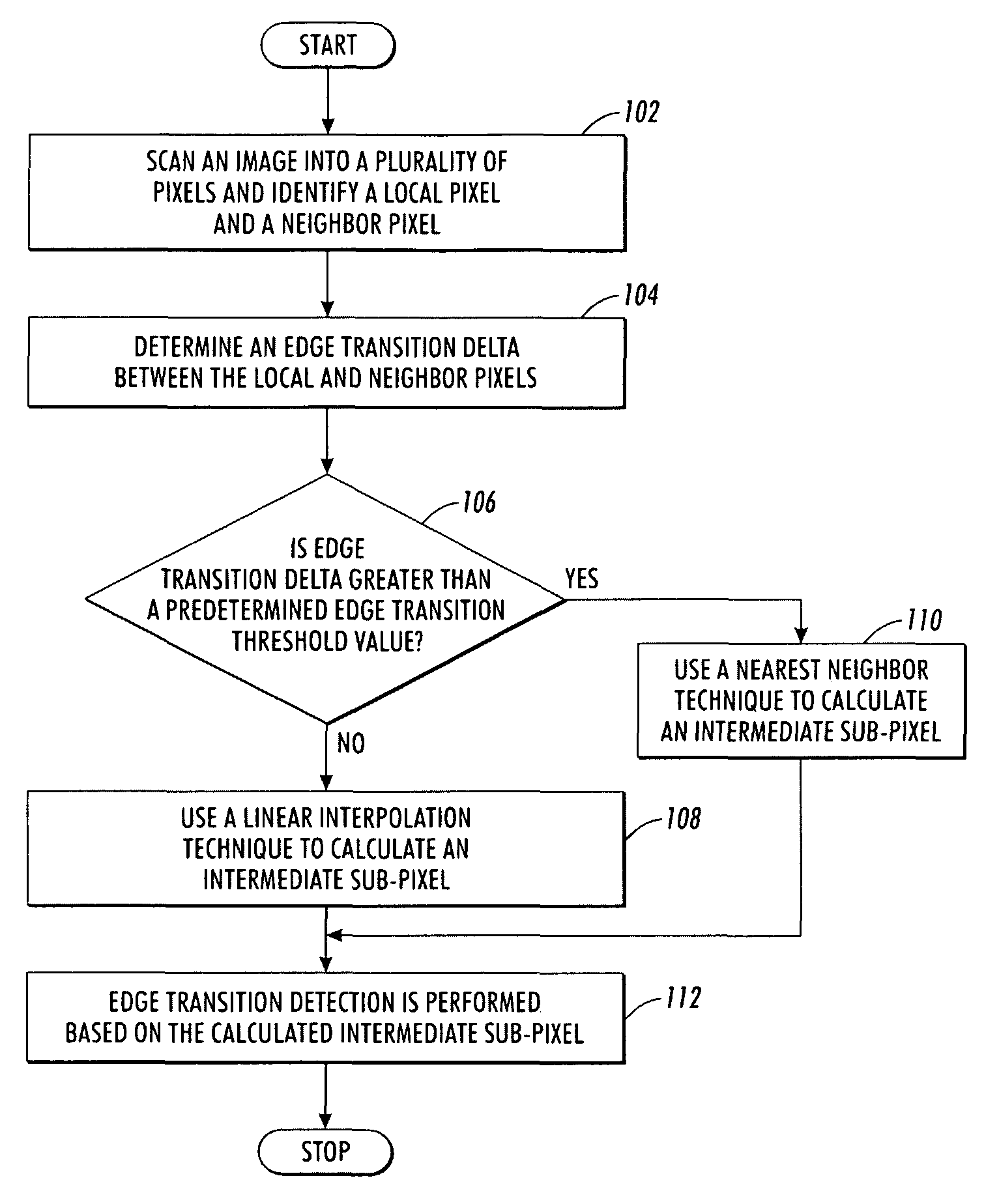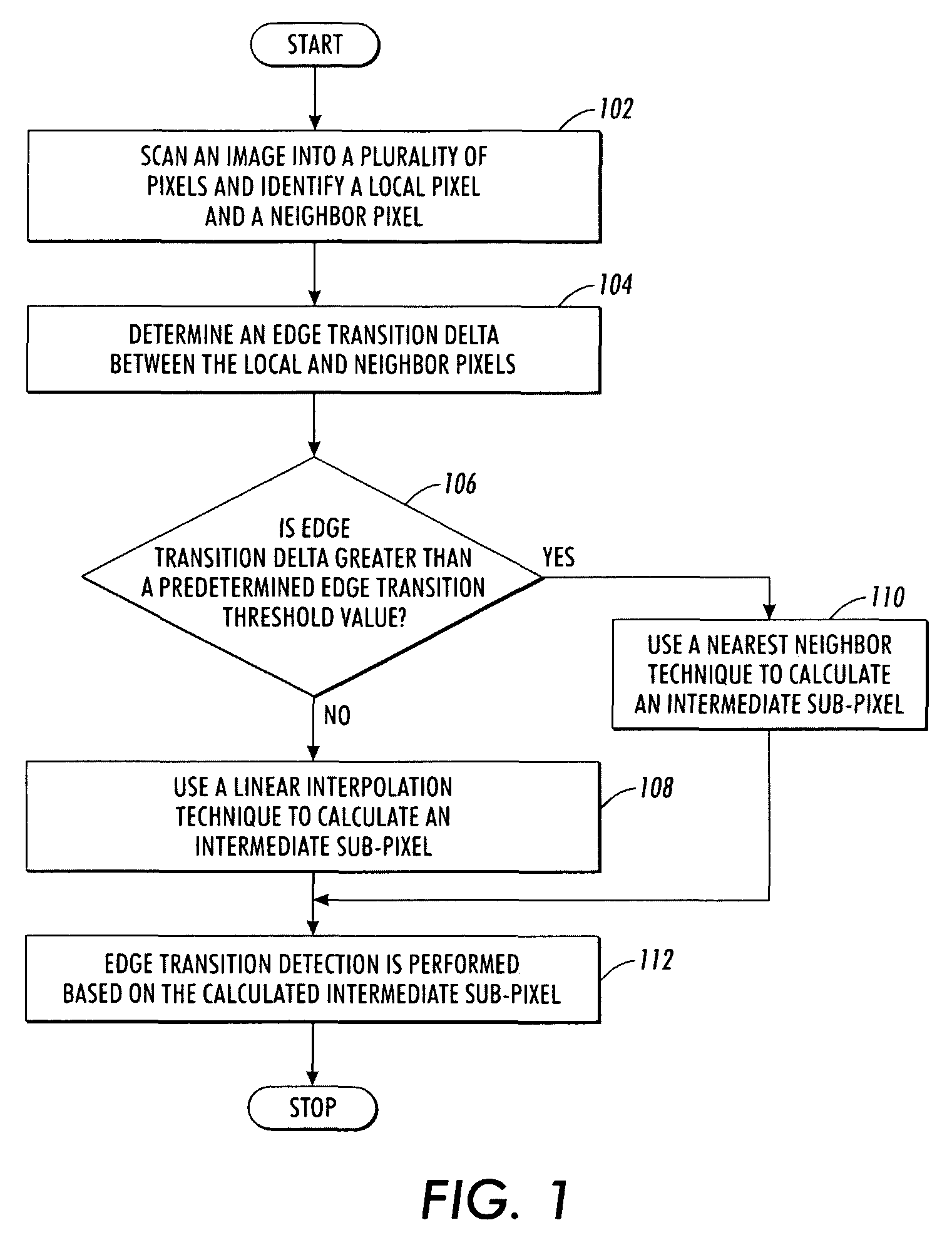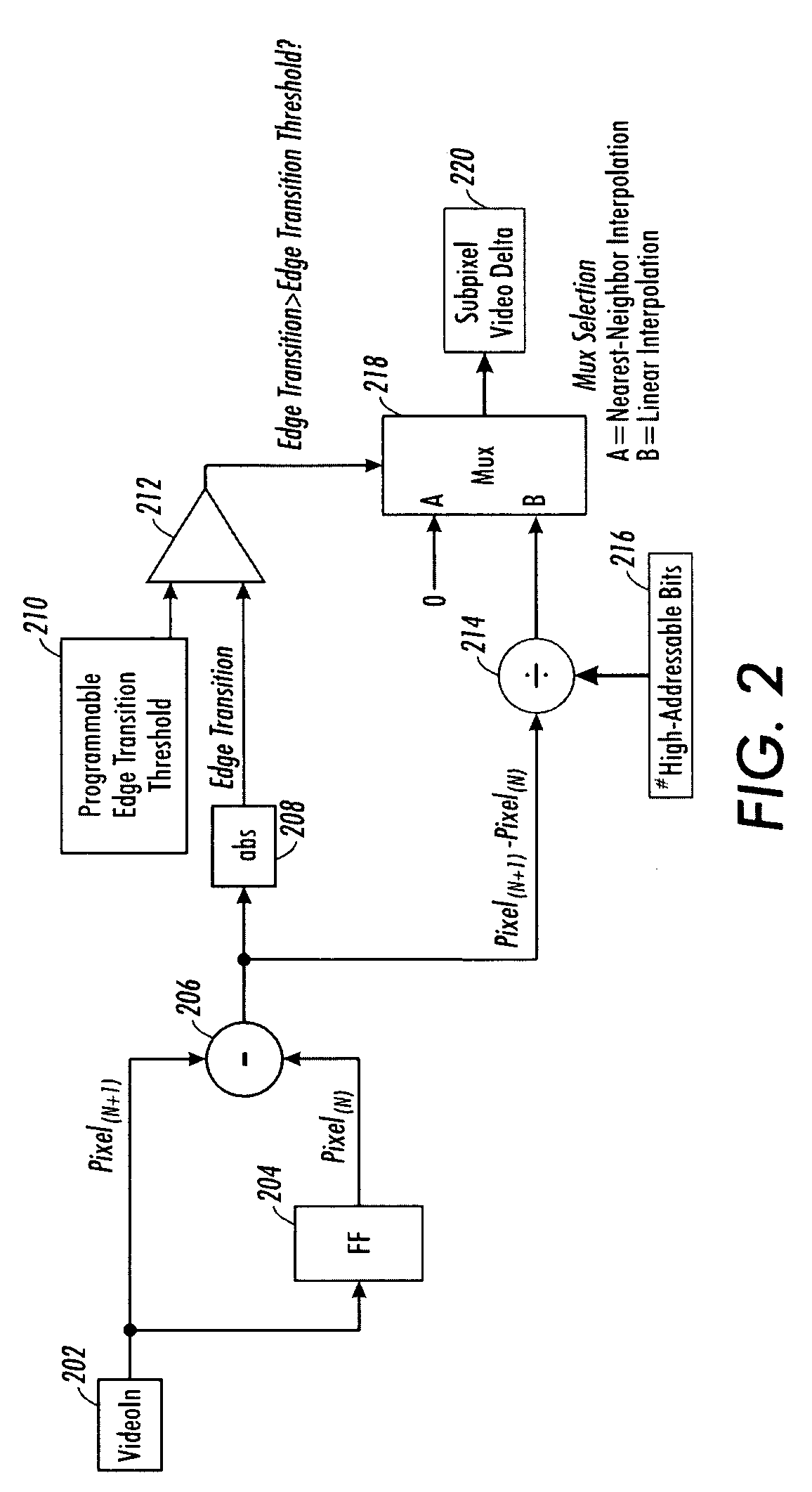Edge transition detection in a high-addressable error diffusion environment
a diffusion environment and detection technology, applied in the field of edge transition detection, can solve the problems of small error term diffusing to neighboring pixels, undesirable local (edge) sub-pixels, dichotomy, etc., and achieve the effect of high addressable error diffusion, improved integrity and sharpness of edges
- Summary
- Abstract
- Description
- Claims
- Application Information
AI Technical Summary
Benefits of technology
Problems solved by technology
Method used
Image
Examples
Embodiment Construction
[0027]What is provided is a system and method for edge transition detection to improve print quality when rendering via high addressable vector error diffusion in an image processing environment.
[0028]It should be understood that one of ordinary skill in this art would be readily familiar with many facets of color science and related algorithms commonly found in the color science arts. One of ordinary skill in this art would also be readily familiar with various mathematical interpolation techniques used in this art such as linear interpolation and nearest neighbor. One of ordinary skill would be knowledgeable about software and programming systems and methods sufficient to implement the functionality and capabilities described in detail herein in their own hardware environment without undue experimentation.
[0029]In order to detect an “ideal” edge and compensate for the adverse effects described in the background hereof, local pixels are detected and local gradient values are calcul...
PUM
 Login to View More
Login to View More Abstract
Description
Claims
Application Information
 Login to View More
Login to View More - R&D
- Intellectual Property
- Life Sciences
- Materials
- Tech Scout
- Unparalleled Data Quality
- Higher Quality Content
- 60% Fewer Hallucinations
Browse by: Latest US Patents, China's latest patents, Technical Efficacy Thesaurus, Application Domain, Technology Topic, Popular Technical Reports.
© 2025 PatSnap. All rights reserved.Legal|Privacy policy|Modern Slavery Act Transparency Statement|Sitemap|About US| Contact US: help@patsnap.com



